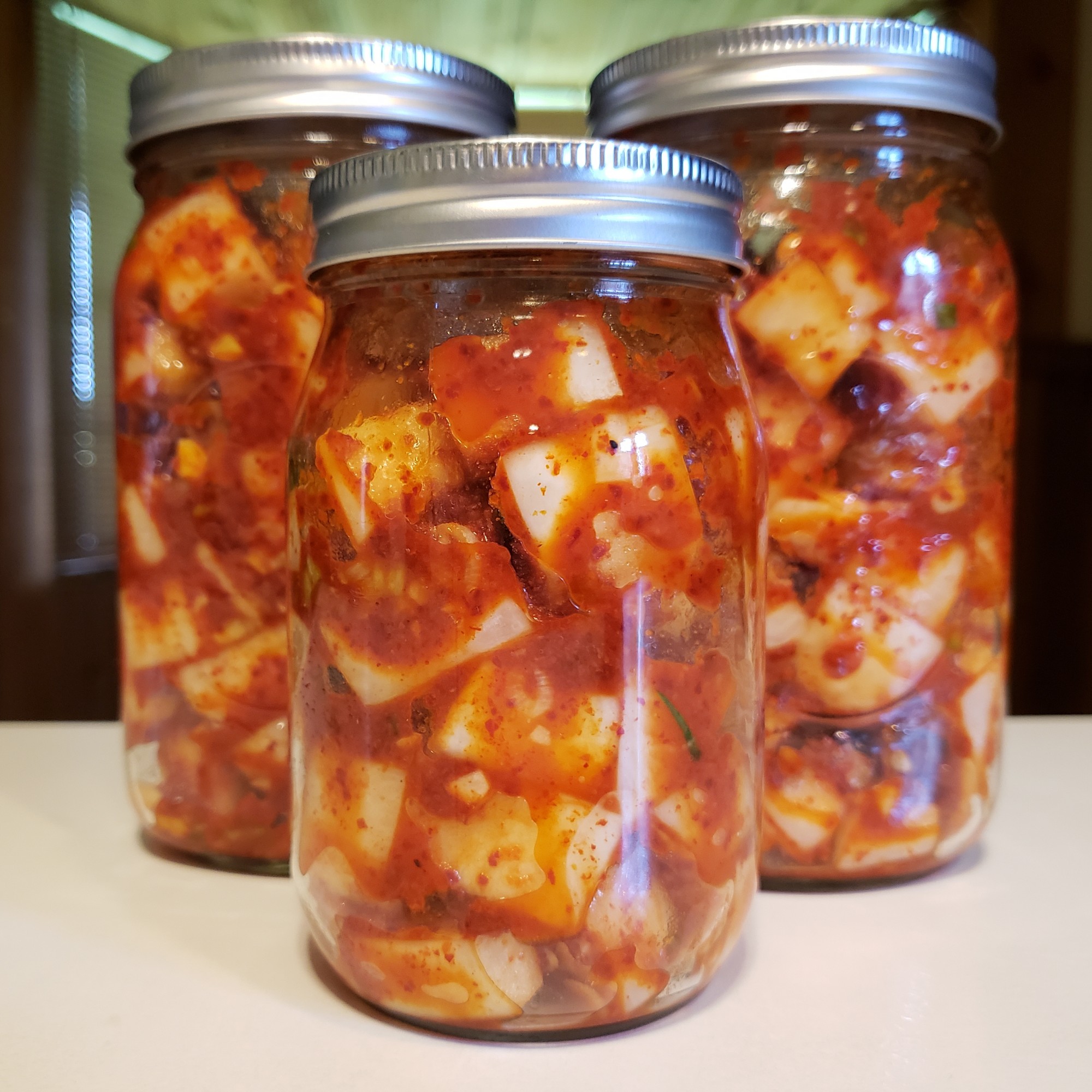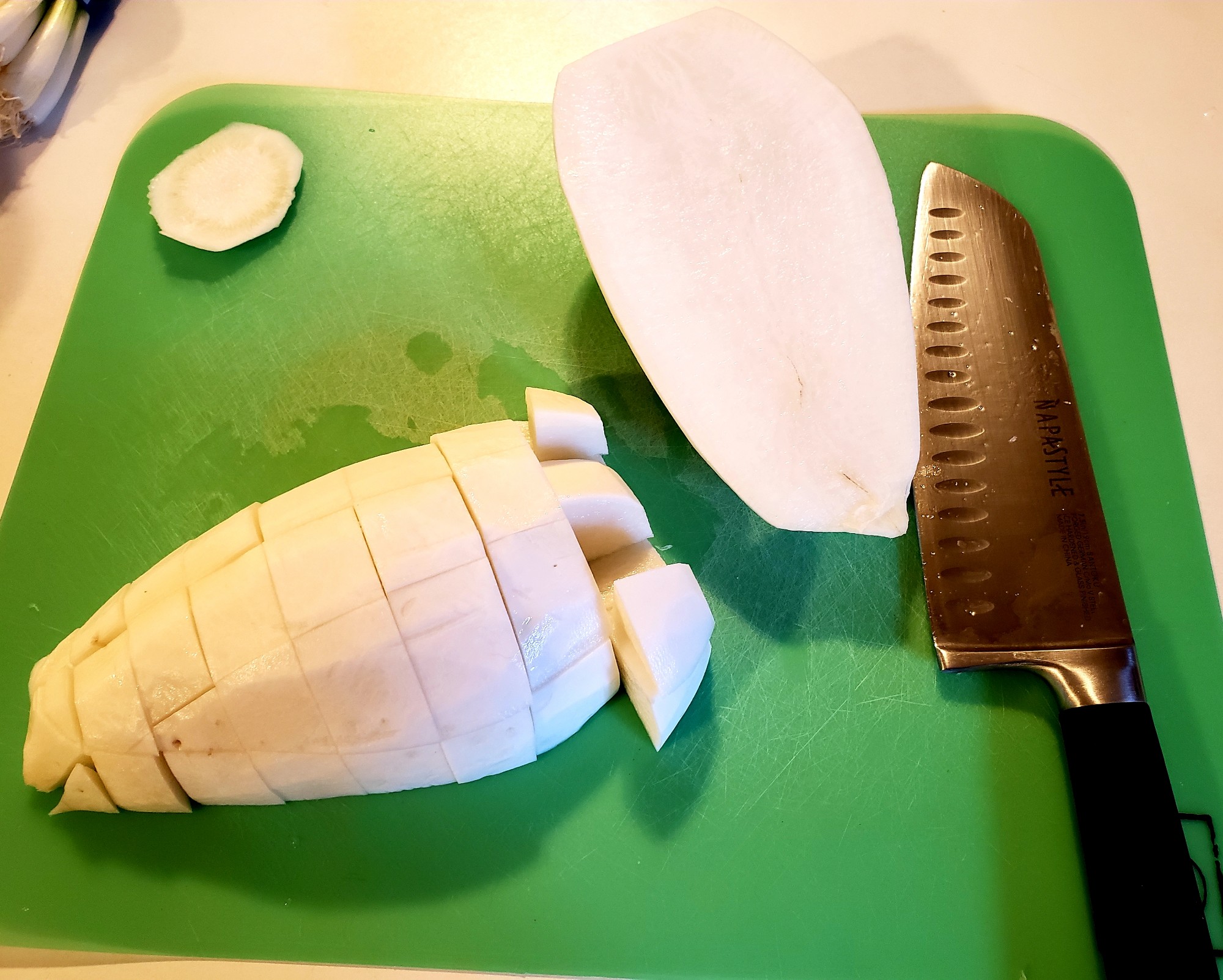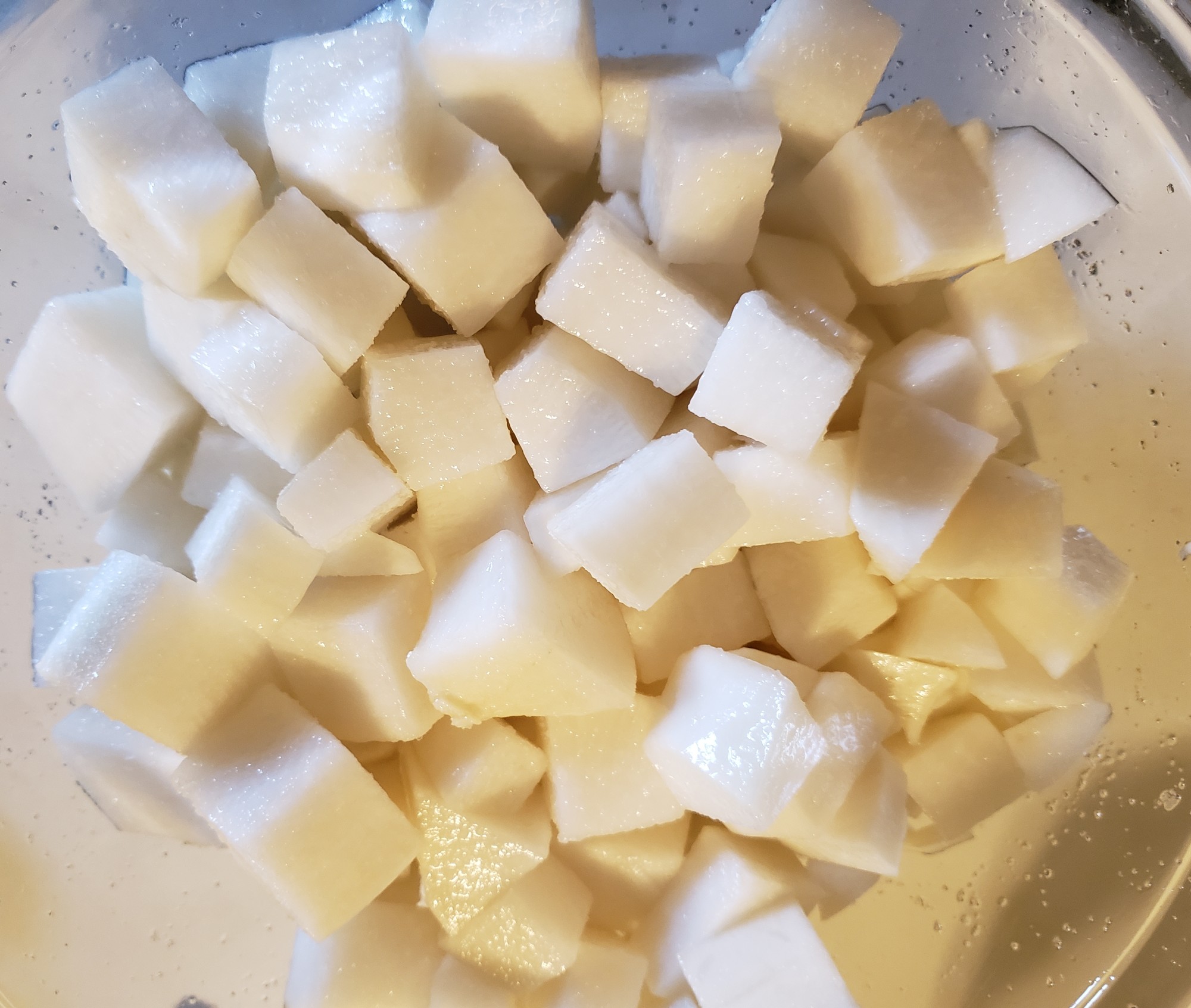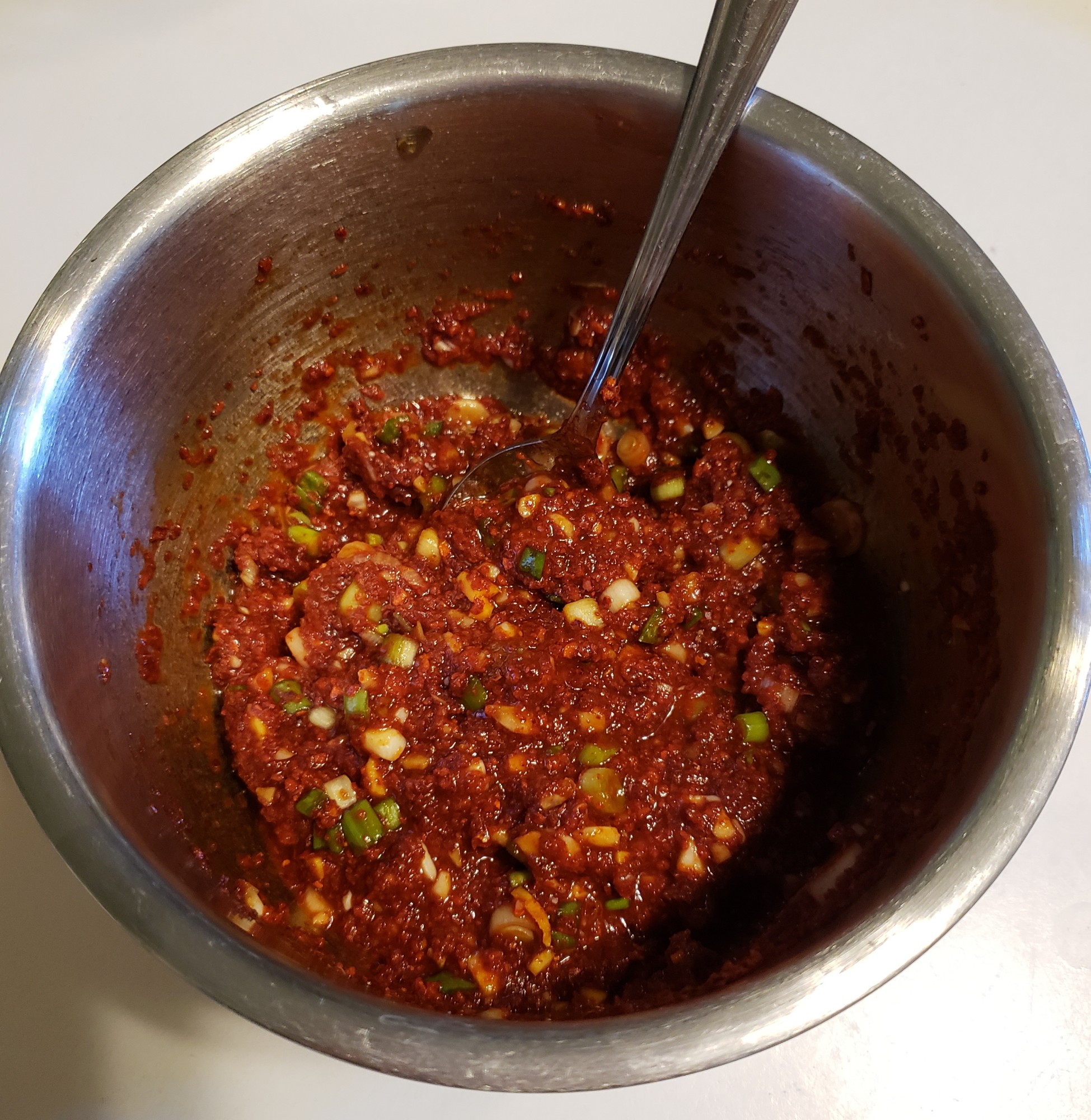
Sometimes, food that smells really funky tastes incredibly delicious…like the Korean fermented vegetable dish called kimchi. I suppose kimchi may be an acquired taste: it’s fragrant with garlic and fish sauce, odors that some may find offensive – and it’s delightfully spicy. As a ferment, it’s full of probiotics, and the fermentation process lends it a piquant tanginess that teases the palate. In the past, I’ve purchased very fine pre-made kimchi from Korean stores, but why buy when you can make it yourself?
This particular kimchi is made from Korean radish called Mu (무), a variety of daikon. The radish is truly delicious (and juicy) on its own, but soars to new heights in Kkakdugi (깍두기). Peeled, chopped radish is combined with sugar, salt, fish sauce, fresh ginger, fresh garlic, green onion, and Korean red pepper (called Gochugaru, 고추가루). Gochugaru is essential to making authentic-tasting Kkakdugi – learn more about these peppers here: Gochugaru – Red Chili Flakes.

The Kkakdugi is so delicious freshly made that it’s difficult to restrain myself from eating it all before it’s actually had time to ferment…but I managed to restrict myself to just a couple of fresh, spicy pieces before tucking it away in its jars. What a taste explosion – palate ennui not possible!



Kkakdugi should be fermented to taste; I’ll probably let this batch ferment for at least a week, then move it to the refrigerator because I prefer it to retain some crispness. It’ll be spectacular in ramen, on locomoco, paired with fried tofu and braised greens…and right out of the jar.
Want to try making it yourself? I used a great recipe from Maangchi.com: Kkakdugi Recipe.

Comments are closed.